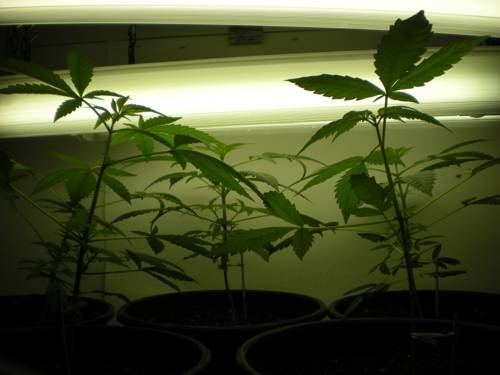
FAQ About Indoor Plant Light Transition Management

What is indoor plant light transition management?
Indoor plant light transition management involves the process of adjusting indoor plants from one light source to another, typically from natural sunlight to artificial lighting or vice versa. This ensures that plants receive adequate lighting for optimal growth and adaptation without undergoing stress. Effective light transition management considers the intensity, duration, and spectrum of lighting to meet the specific needs of each plant.

Why is transitioning indoor plants between light sources important?
Transitioning indoor plants between light sources is important because plants are sensitive to changes in their environment, especially in terms of light exposure. A sudden change in light conditions can shock plants, affecting their growth, health, and even survival. By managing this transition, you help plants adapt smoothly, maintaining their health and ensuring they continue to photosynthesize efficiently.

How can I gradually transition my indoor plants from natural to artificial light?
To gradually transition indoor plants from natural to artificial light, start by positioning artificial lights alongside the plant in its current location and gradually increase the usage of artificial light over a period of days or weeks. Start with the artificial lights on for a few hours a day, then slowly increase this duration. This gradual introduction helps the plant adjust to new light conditions without stress.

What type of artificial light is best for indoor plants transitioning from natural light?
The best type of artificial light for indoor plants transitioning from natural light would be full-spectrum LED grow lights. These lights mimic the natural sunlight spectrum, providing a balanced range of blue, red, and other spectral colors that plants need for photosynthesis and growth. LED grow lights are also energy-efficient and have a longer lifespan compared to other types of lighting.

How do I know if my plant needs a light transition management?
If you notice your plant's growth is stunted or if the leaves are discolored, this might indicate an issue with its current lighting conditions. Plants that are moved from outdoors to indoors, or from one room to another with different lighting, may also require transition management to ensure they continue to receive adequate light for healthy growth.

Can all indoor plants transition between light sources easily?
Not all indoor plants transition easily between light sources. Some plants are more sensitive to changes in light conditions than others. For example, shade-loving plants may struggle with intense light, while sun-loving plants might react poorly to low-light conditions. It's important to understand the specific light requirements and adaptability of each plant species before transitioning them.

What are the signs that a plant is not adjusting well to a new light source?
Signs that a plant is not adjusting well to a new light source include wilting, leaf drop, leaf yellowing, slowed growth, or leaf scorching. If these symptoms occur, it may be necessary to adjust the light intensity, duration, or spectrum to better suit the plant’s needs or reconsider the pace of transition.

How long does it typically take for a plant to adjust to a new light source?
The time it takes for a plant to adjust to a new light source can vary widely depending on the species and the extent of the light change. Generally, it may take a few days to several weeks for a plant to acclimatize. Monitoring the plant during this period for signs of stress and adjusting the light conditions as needed can facilitate a smoother transition.

Should I change the light duration when transitioning plants?
Yes, adjusting the light duration is an essential part of transitioning plants between light sources. Initially, you might start with a shorter light duration and gradually increase it to simulate the natural length of daylight, helping the plant to acclimate without shock. Be mindful of your specific plant’s needs and its natural photoperiod requirements.

Can I use a timer to help manage light transitions for my indoor plants?
Using a timer is an excellent way to manage light transitions for indoor plants. Timers can automate the lighting schedule, ensuring a consistent light period each day, which can be carefully adjusted over time to help your plant adapt gradually. This consistency helps reduce human error and provides a stable environment for your plants.

What is the difference between natural and artificial light for plants?
Natural light from the sun provides a full spectrum of light wavelengths, including all colors of the light spectrum, which are optimal for plant growth. Artificial lights, like LEDs or fluorescent lights, can be designed to emit specific parts of the light spectrum. They often aim to mimic natural sunlight but can vary in intensity and effectiveness. It's important to choose artificial lights that closely meet the plants' natural light spectrum needs.

Is it possible to use both natural and artificial light sources simultaneously?
Yes, it is possible to use both natural and artificial light sources simultaneously for indoor plants. This approach is useful when natural light exposure is limited or inconsistent. Combining both sources can help maintain the necessary light intensity and duration, especially during seasons when natural daylight is insufficient for plant needs.

What role does light spectrum play in transitioning plants?
Light spectrum plays a critical role in plant growth as different wavelengths promote various physiological processes. Blue light supports leafy growth, while red light promotes flowering and fruiting. When transitioning plants between light sources, maintaining a balanced spectrum that mimics natural sunlight ensures all necessary wavelengths are available for the plant's developmental needs.

Are there any specific conditions where artificial light might be preferable for indoor plants?
Artificial light might be preferable for indoor plants in spaces with minimal natural light, such as windowless rooms or during winter when daylight hours are short. Artificial lighting allows precise control over light intensity, duration, and spectrum, providing an optimal environment for plant growth year-round regardless of natural light availability.

Can moving a plant closer to or farther from a light source help during the transition?
Adjusting the distance between the plant and the light source can help during the transition. Moving a plant closer increases light intensity, which can be beneficial for plants needing higher light. Conversely, moving it farther reduces light intensity, which is useful when acclimating shade-loving plants to artificial light. Always monitor the plant’s response and adjust accordingly.

What happens if a plant receives too much artificial light?
If a plant receives too much artificial light, it can lead to light stress or burns, indicated by browning edges or tips on leaves and fading colors. Overexposure may also lead to excessive evaporation and water loss. Adjusting the light intensity and duration can help prevent these negative effects and maintain plant health.

How can I increase natural light availability for my indoor plants?
To increase natural light availability for indoor plants, position them near south-facing windows, which typically receive the most sunlight. Use sheer curtains to diffuse harsh sunlight and prevent leaf burn. Regularly rotating the plant can also ensure even light exposure on all sides.

Which plants adapt best to transitions in light sources?
Plants that adapt best to transitions in light sources are generally those that are more resilient and versatile, such as pothos, snake plants, and zz plants. These varieties can tolerate varying light conditions and tend to recover well from environmental changes. However, individual plant responses can vary, so gradual introduction is always beneficial.

What common mistakes should be avoided during light transition?
Common mistakes during light transition include changing the light source too abruptly, not considering the plant's specific light requirements, and overestimating the intensity needed. It's also a mistake to overlook monitoring the plant for stress signs. A gradual and attentive approach ensures a smoother adaptation.

Can indoor plants be moved outside into natural sunlight directly?
Indoor plants should not be moved directly into natural sunlight, especially if they are accustomed to lower light levels. Direct exposure to intense sunlight can cause leaf burn and shock. Instead, acclimate plants by starting them in a shaded outdoor area and gradually increasing their exposure over several days or weeks to help them adjust to sunlight intensity.
